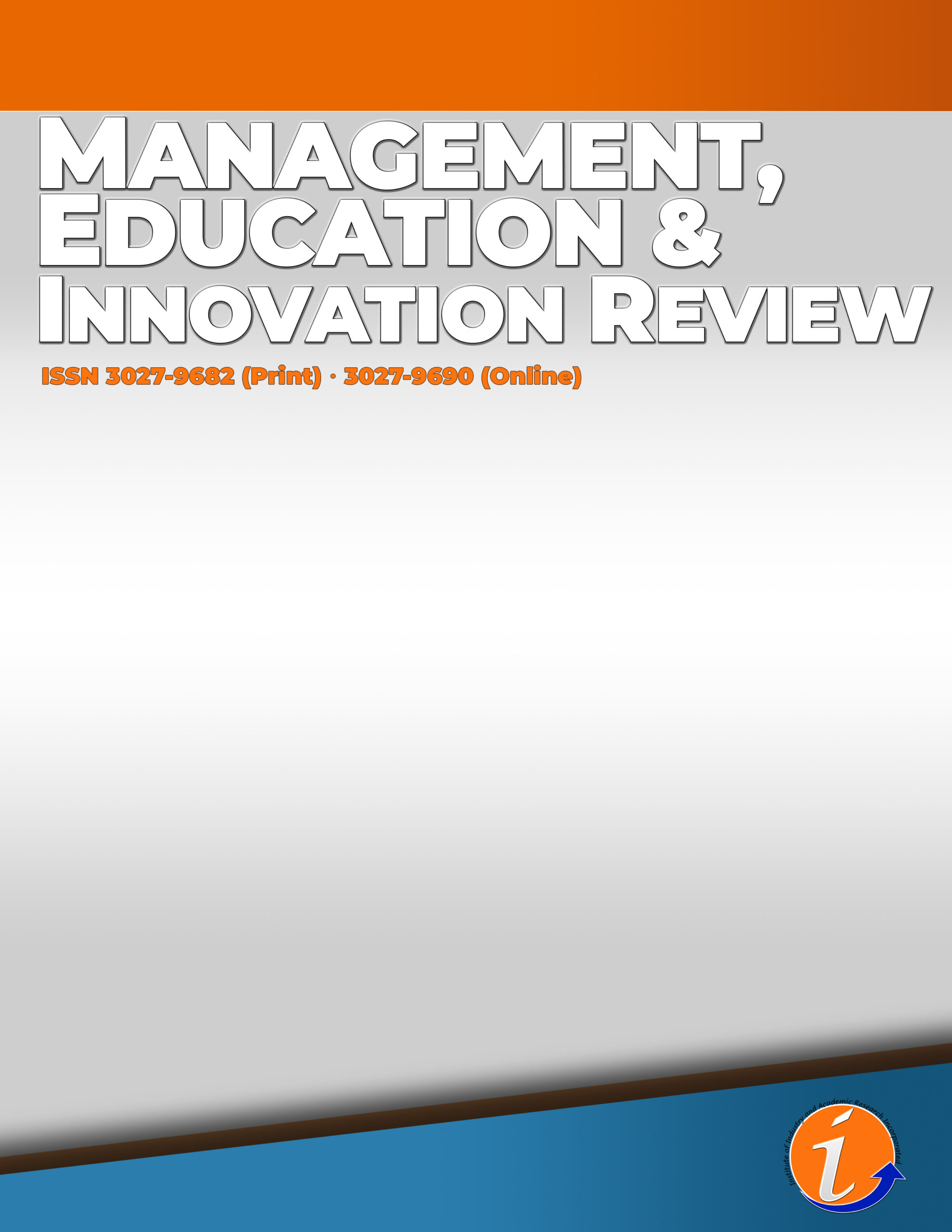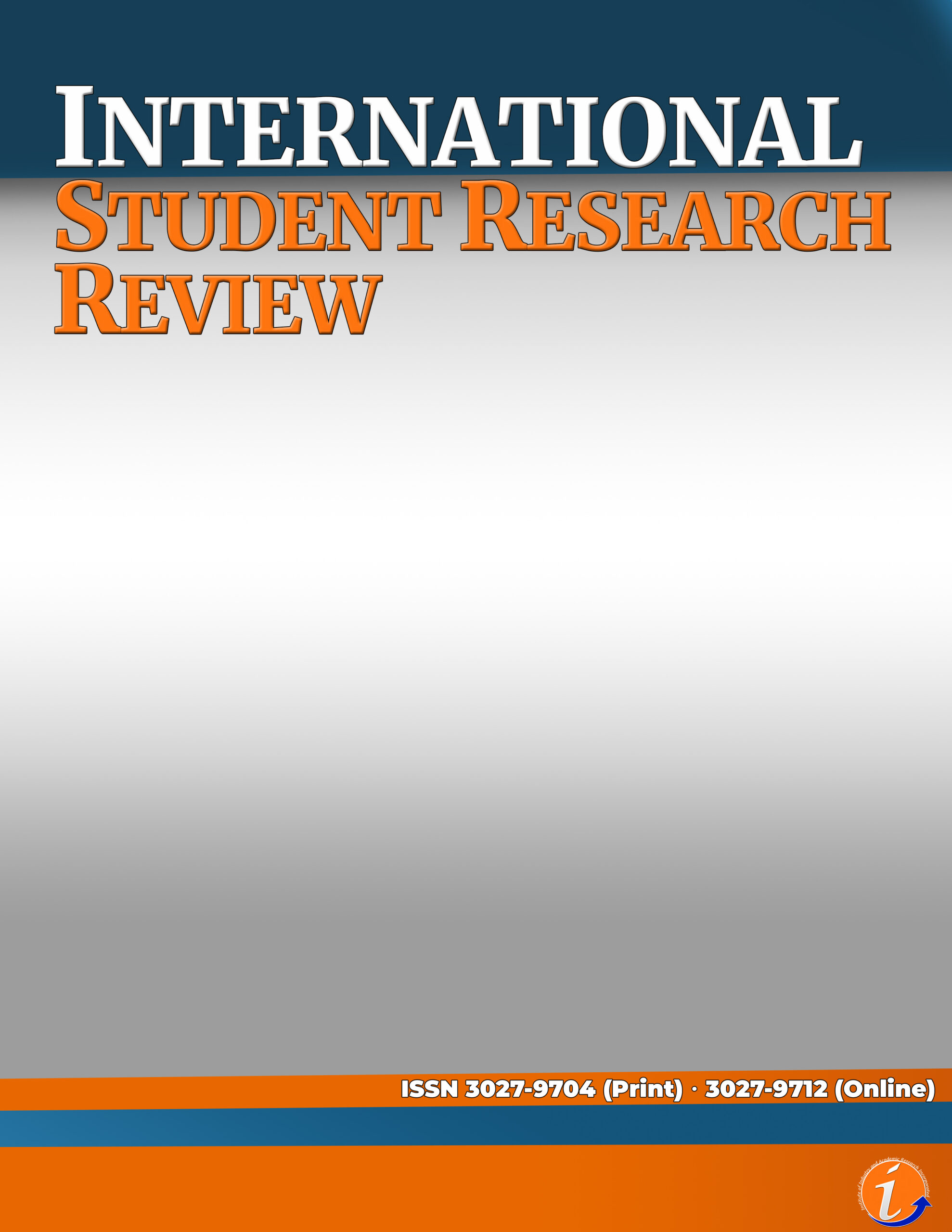Abstract
This study utilized the descriptive qualitative research design which primarily aims to find out the school climate and work-balance of the seven elementary teachers in the new normal in the District of Patnongon I, Division of Antique in Western Visayas during the school year 2021 – 2022. The participants revealed the negative school climate conditions in their school such as: foster safety and well-disciplined environment, child friendly and prioritized wellbeing, strong and good leadership of school head, school head-to-teacher good relationship, teacher-to-teacher harmonious relationship, teacher-to-student sound relationship. Negative climate conditions were likewise divulged such as: poor student academic achievement and performance, school head-to-teacher conflict, teachers-to-teacher conflict. In terms of the work-balance activities of the participants, they disclosed the following: prioritizing health, proper work schedule and time management also emerged as a work balance practice, some of the participants revealed that their Personal and professional life must not contradict with each other. Respondent took consideration of balancing time between personal and working time to avoid overwhelming the other and to evade work related problems in the future. In terms of coping mechanisms, teacher-to-parent conferencing was conducted by the teachers. This method helped the teacher clarify and explain problem with the stakeholder and the school. This coping mechanism also gave the stakeholder knowledge about what was happening inside the school and how important was the parent involvement and contribution towards school programs.
Keywords: School climate, work-balance, coping mechanisms, negative school climate, positive school climate.
*This paper is presented at the 4th International Conference on Multidisciplinary Industry and Academic Research (ICMIAR) 2023
References
Abban, K. (2012). Understanding the importance of time management to assistant registrar’s in the Registrars Department of the University of Education. International Journal of Scientific & Engineering Research, 3 (12) 347 – 379.
Adegbemile O. (2004). Analysis of Factors Influencing Job Satisfaction of Teachers in Ondo State. Unpublished M.ED Thesis, Adekunle Ajasin University, Akungba-Akoko.
Ailamaki, A. & Gehrke, J. (2016). Time management for new faculty.
Alay, S. & Koçak, S. (2002). Validity and reliability of time management questionnaire. Ankara: Hacettepe Üniversitesi Eğitim Fakültesi Dergi,çi 22 .’ 9-13
Allen, N. J. (2015). Transformational leadership and its relationship to school climate and student achievement (Order No. 3662981). Available from ProQuest Dissertations and Theses Global. (1687828500). Retrieved from http://search.proquest.com/docview/1687828500?accountid=16716
Bandy, T. & Moore, K. (2010). Assessing self-regulation: A guide for out-of-school time program practitioners. Results-to-Research Brief, 23.
Bear, G. G., Yang, C., Pell, M., & Gaskins, C. (2014). Validation of a brief measure of teachers’ perceptions of school climate: Relations to student achievement and suspensions. Learning Environments Research,17(3), 339–354.
Beckley, G. M. (2012). Catholic school leadership: School climate and culture and the influence on principal satisfaction (Unpublished doctoral dissertation). Nashville: Trevecca Nazarene University.
Bell, A., Rajendran, D. & Theiler, S. (2012). Job stress, wellbeing, work-life balance and work-life conflict among Australian academics. Electronic Journal of Applied Psychology, 8 (1) 211 – 247.
Cardinale, N. (2013). Examining the transition to a four-day school week and investigating post-change faculty/staff work-life balance: A community college case study. ProQuest Dissertations Publishing.
Carwell, T. L. (2012). The impact of the Stanford math intervention program and school climate on mathematics achievement levels of female middle school students (Order No. 3514803). Available from ProQuest Dissertations and Theses Global. (1021723760). Retrieved from http://search.proquest.com/docview/1021723760?accountid=16716
Çelik, V. (2012). Okul kültürüve yönetimi. Ankara: Pegem.
Chan Suk – fun, I. (2007). Work-life balance: a study of the effect of conflict and facilitation among life roles on psychological well-being and quality of life of individuals in Hong Kong. Retrieved November 10, 2016 from www.eric.ed.gov.
Collins T. N., Parson K. A. (2010). School climate and student outcomes. J. Cross Discipl. Perspect. Educ. 3, 34–39.
Cook, L. (2011). Disability, leisure, and work-life balance. Doctoral Dissertation, University of Illinois.
Daft, R. (2005). Management. 7th ed. Australia: Thomson Learning.
Dalli, M. (2014 ). The university students’ time management skills in terms of their academic life satisfaction and academic achievement levels. Academic Journals, 9 (20).
D’Artenzio, C. (2102). Understanding change and change management: A case study. A Doctoral Dissertation. University of Canberra. Australia. Retrieved on November 20, 2016 from www.eric.ed.gov.
Davidson, J. (1996). The six components of work-life balance. Retrieved August 12, 2016 from http://work-lifebalance.com.
Davis, B. W. (2010). The relationship of principal leadership style as it affects school climate and student achievement (Order No. 3425719). Available from ProQuest Dissertations and Theses Global. (759831811). Retrieved from http://search.proquest.com/docview/759831811?accountid=16716
Espelage DL, Polanin JR, Low SK. Teacher and staff perceptions of school environment as predictors of student aggression, victimization, and willingness to intervene in bullying situations. Sch Psychol Q. 2014 Sep; 29(3):287-305.
Fraenkel, J. R. & Wallen, N E. (2007). How to design and evaluate research in education. 6th ed. New York: McGraw-Hill.
Germaine, B. F. (2014). Work-life balance and the Canadian teaching profession. Canadian Teacher’s Federation. Research and Information 1-11.
Greenhaus, J. H., Collins, K. M., & Shaw, J. D. (2003). The relation between work-family balance and quality of life. Journal of Vocational Behavior, 63(3), 510-531.
Halpin, A. W. (1966). Theory and research in administration. NewYork, NY: Macmillan.
Hardie, E., Kashima, E. S., & Pridmore, P. (2005). The influence of relational, individual and collective self-aspects on stress, uplifts and health. Self and Identity, 4(1), 1-24.
Heck R. H. (2000). Examining the impact of school quality on school outcomes and improvement: a value-added approach. Educ. Administrat. Q. 36, 513–552. 10.1177/00131610021969092
Hough, D. L., & Schmitt, V. L. (2011). An ex post facto examination of relationships among the developmental designs professional development model/classroom management approach, school leadership, climate, student achievement, attendance, and behavior in high poverty middle grades schools. Middle Grades Research Journal ,6(3), 163–176.
Jia Y, Way N, Ling G, Yoshikawa H, Chen X, Hughes D, Ke X, Lu Z. The influence of student perceptions of school climate on socioemotional and academic adjustment: a comparison of Chinese and American adolescents. Child Dev. 2009 Sep-Oct; 80(5):1514-30.
Kawar, T. (2012). Cross-cultural differences in management. International Journal of Business and Social Science, 3 (6) 78 – 89.
Kanji, G.P., & Moura, E.P. (2003). Sustaining healthcare excellence through performance measurement. Total Quality Management & Business Excellence, 14(3), 269-289.
Kelly, R. A. (2004). Principal leadership and school climate: The effects on student achievement in magnet schools (Order No. 3164800). Available from ProQuest Dissertations and Theses Global. (305051616). Retrieved from http://search.proquest.com/docview/305051616?accountid=16716
Lazarus, R. S., & Folkman, S. (1984). Stress, appraisal, and coping. New York: Springer Publishing Company Inc.
Lee E., Reynolds K. J., Subasic E., Bromhead D., Lin H., Marinov V., et al. (2017). Development of a dual school climate and school identification measure–student (SCASIM-St). Contemp. Educ. Psychol. 49, 91–106. 10.1016/j.cedpsych.2017.01.003
Lorig, K. (1993). Self-management of chronic illness: A model for the future. In McGowan, P. Self-management: A Background Paper. University of Victoria – Centre on Aging. Retrieved October 20, 2016 from Google. Com.
Lubienski S. T., Lubienski C., Crane C. C. (2008). Achievement differences and school type: the role of school climate, teacher certification, and instruction. Am. J. Educ. 115, 97–138. 10.1086/590677
Lussier, R.N. (2002). Human relations in organizations: applications and skill building. 5th ed. New York: McGraw – Hill Companies.
Lycke, L. (2003). Team development when implementing TPM. Total Quality Management, 14(2), 205-213.
Maduabum, M. A. (2002). Occupational stress factors among secondary school principals in Abia State, Nigeria. International Journal of Educational Planning and Administration. 1(1): 17—27.
McMillan, H.S., Morris, M.L., & Atchley, E.K. (2008). Constructs of the work/life interface and their importance to HRD. Retrieved November 20, 2016 from http://files.eric.ed.gov/fulltext/ED501620.pdf
Ngoka, G.N. (2000). Stress Management in Organizations, University and Political Circles. Enugu: Cecta Nigeria Ltd.
Petrie K. (2014). The relationship between school climate and student bullying. TEACH J. Christ. Educ. 8, 26–35. Available online at: https://research.avondale.edu.au/cgi/viewcontent.cgi?referer=https://scholar.google.com.au/&https%20redir=1&article=1237&context=teach
Phillips, J. (2016). Rural women family physicians: Strategies for successful work-life balance. Annals of Family Medicine, Inc. Retrieved November 12, 2016 from www.eric.ed.gov.
Po-Ju Chang, L. W. & Yeqiang, L. (2014). Social Relationships, leisure activity, and health in older adults. Health Psychology, 33 (6) 516–523.
Ramelow D., Currie D., Felder-Puig R. (2015). The assessment of school climate review and appraisal of published student-report measures. J. Psychoeduc. Assess. 33, 731–743. 10.1177/0734282915584852
Rife, A. A. & Hall, R. J. (2015). Work-Life Balance. Society for Industrial and Organizational Psychology. Retrieved November 12, 2016 from http://www.siop.org/WhitePapers/WorkLifeBalance.pdf
Roeser R. W., Eccles J. S., Sameroff A. J. (2000). School as a context of early adolescents’ academic and social-emotional development: a summary of research findings. Elem. Sch. J. 100, 443–471. 10.1086/499650
Stewart, J., & Kringas, P. (2003). Change management – strategy and values. Six case studies from the Australian public sector. University of Canberra, ACT: Centre for Research in Public Sector Management.
Tableman, B. (2004). School climate and learning. Best Practices Brief, 31, 1–10.
Talbert, J. M. (2002). Professional communities and the artisan model of teaching. Teachers and Teaching, 5(3), 325–343.
Taylor, E. (2014). Race achievement gap: How motivation orientation, school climate, and academic self-concept predict school achievement (Order No. 3579647). Available from ProQuest Dissertations and Theses Global. (1508513500). Retrieved from http://search.proquest.com/docview/1508513500?accountid=16716
Thapa A., Cohen J., Guffey S., Higgins-D’Alessandro A. (2013). A review of school climate research. Rev. Educ. Res. 83, 357–385. 10.3102/0034654313483907
Tschannen-Moran M., Parish J., DiPaola M. (2006). School climate: the interplay between interpersonal relationships and student achievement. J. Sch. Leadership 16, 386.
Turner I, Reynolds KJ, Lee E, Subasic E, Bromhead D. (2014). Well-being, school climate, and the social identity process: a latent growth model study of bullying perpetration and peer victimization. Sch Psychol Q. 2014 Sep; 29(3):320-335.
Voight, A., Nixon, C. T., & Nation, M. (2011). The relations between school climate and key educational outcomes for urban middle school students. Paper presented at the annual meeting of the American Education Research Association, New Orleans, LA, 12 April 2009. doi:10. 1007/s10464-005-8629-8.
Von Bergen, C.W., Soper, B, & Gaster, B. (2002). Effective self -management techniques. Journal of Business and Entrepreneurship, 14 (2) 6 – 29.
Wang, M. T., Selman, R. L., Dishion, T. J., & Stormshak, E. A. (2010). A tobit regression analysis of the covariation between middle school students’perceived school climate and behavioral problems. Journal of Research on Adolescence, 20, 274–286. doi:10.1111/j.1532-7795.2010.00648.x
Work-life balance. Retrieved November 20, 2016 from https://ec.europa.eu/epale/en/blog/work-life-balance-adult-education-policy-well













